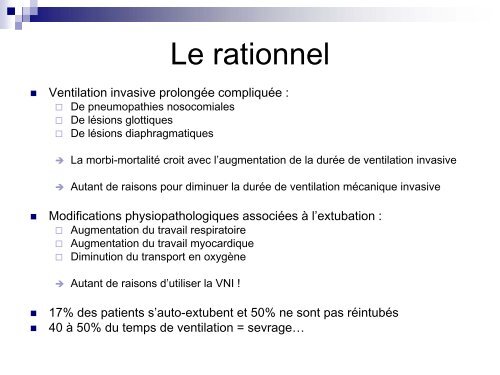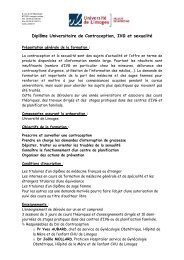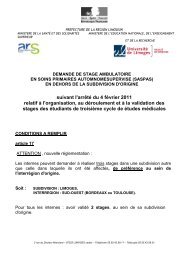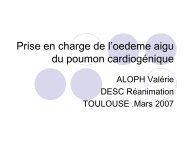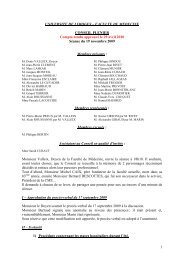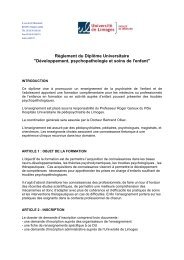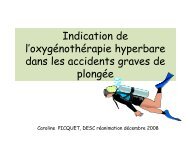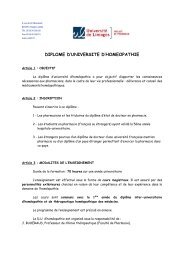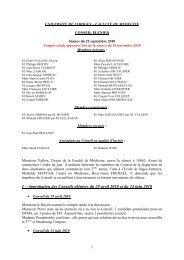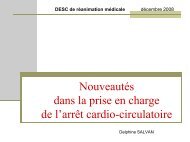Place de la VNI en post extubation
Place de la VNI en post extubation
Place de la VNI en post extubation
- No tags were found...
You also want an ePaper? Increase the reach of your titles
YUMPU automatically turns print PDFs into web optimized ePapers that Google loves.
Le rationnel• V<strong>en</strong>ti<strong>la</strong>tion invasive prolongée compliquée : De pneumopathies nosocomiales De lésions glottiques De lésions diaphragmatiques La morbi-mortalité croit avec l’augm<strong>en</strong>tation <strong>de</strong> <strong>la</strong> durée <strong>de</strong> v<strong>en</strong>ti<strong>la</strong>tion invasive Autant <strong>de</strong> raisons pour diminuer <strong>la</strong> durée <strong>de</strong> v<strong>en</strong>ti<strong>la</strong>tion mécanique invasive• Modifications physiopathologiques associées à l’<strong>extubation</strong> : Augm<strong>en</strong>tation du travail respiratoire Augm<strong>en</strong>tation du travail myocardique Diminution du transport <strong>en</strong> oxygène Autant <strong>de</strong> raisons d’utiliser <strong>la</strong> <strong>VNI</strong> !• 17% <strong>de</strong>s pati<strong>en</strong>ts s’auto-extub<strong>en</strong>t et 50% ne sont pas réintubés• 40 à 50% du temps <strong>de</strong> v<strong>en</strong>ti<strong>la</strong>tion = sevrage…


